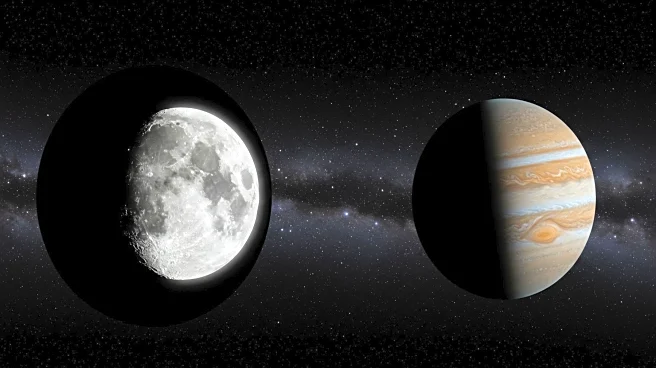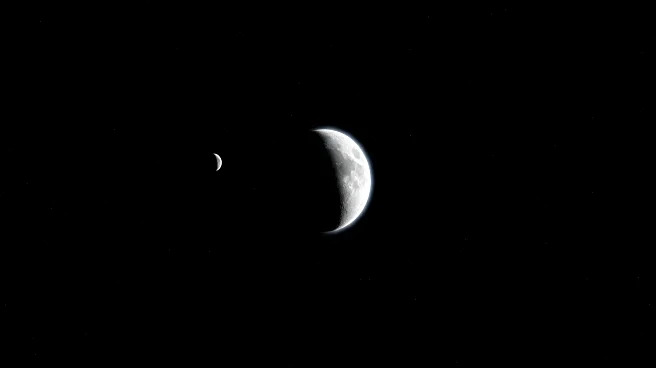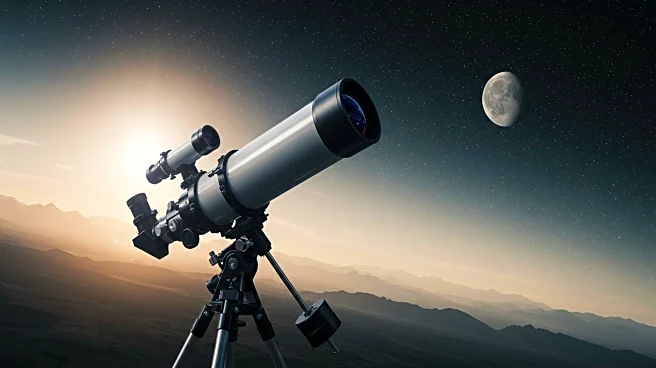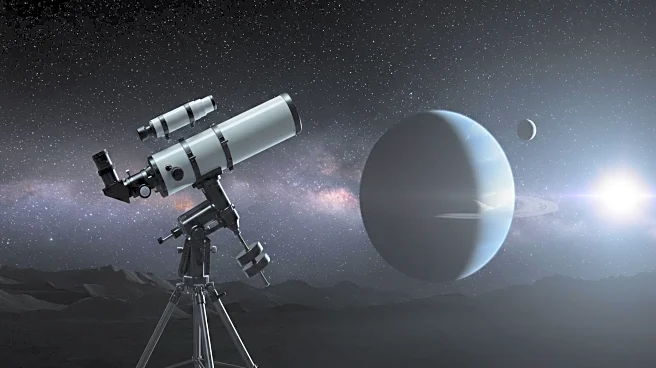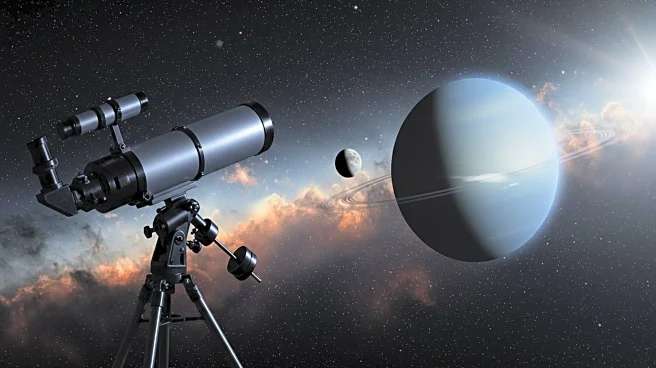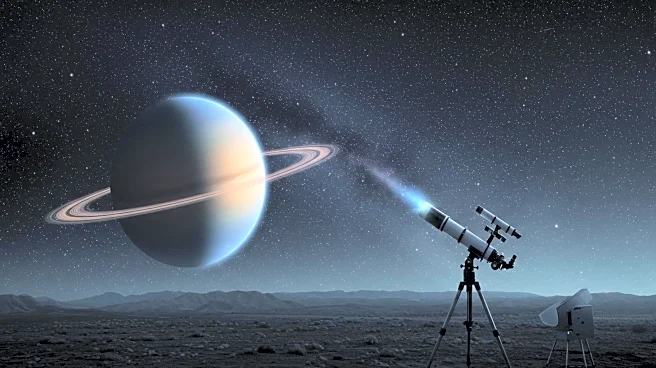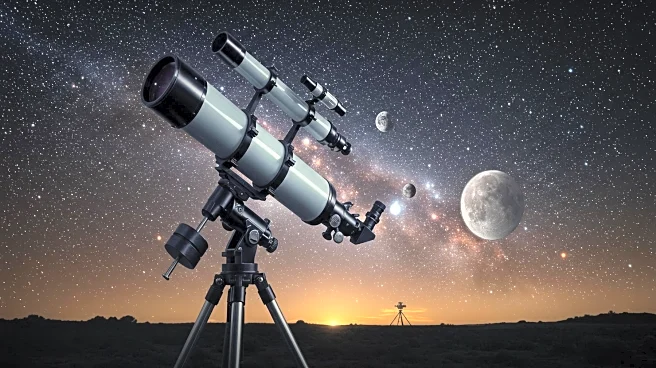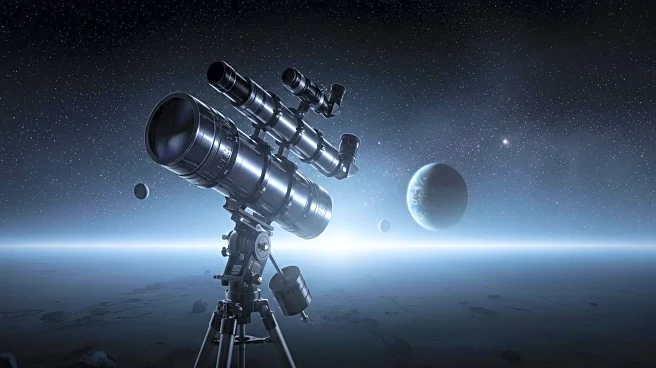What's Happening?
NASA has identified a new moon orbiting Uranus, increasing the planet's total number of moons to 29. The discovery was made by a team led by the Southwest Research Institute using the James Webb Space Telescope. The moon, designated S/2025 U1, measures approximately 6 miles in diameter and is located about 35,000 miles from Uranus's center, positioned between the orbits of Ophelia and Bianca. This moon is smaller and fainter than previously known inner moons, suggesting further complexity in Uranus's satellite system. The Near-Infrared Camera (NIRCam) on the telescope, known for its high resolution and infrared sensitivity, facilitated the detection of this faint object.
Why It's Important?
The discovery of S/2025 U1 adds to the understanding of Uranus's complex satellite system, which is unique due to its numerous small inner moons. This finding highlights the capabilities of the James Webb Space Telescope in identifying distant celestial bodies that were previously undetected, even by missions like Voyager 2. The presence of additional moons could provide insights into the formation and evolution of Uranus's rings and moons, offering a broader understanding of planetary systems. The discovery also underscores the potential for further exploration and study of Uranus, which may reveal more about the dynamics of its moons and rings.
What's Next?
The newly discovered moon awaits an official name, which will be approved by the International Astronomical Union (IAU). The IAU is responsible for naming and designating astronomical objects. As the James Webb Space Telescope continues its observations, more discoveries about Uranus's moons and other celestial phenomena are anticipated. Researchers may focus on understanding the interactions between these moons and Uranus's rings, as well as the implications for planetary science.
Beyond the Headlines
The discovery of S/2025 U1 contributes to the cultural aspect of Uranus's moons, which are often named after characters from Shakespearean works and titles by Alexander Pope. This tradition reflects the intersection of science and literature, enriching the narrative of space exploration. The ongoing study of Uranus's moons may also influence future missions to the planet, potentially leading to new scientific inquiries and technological advancements.
